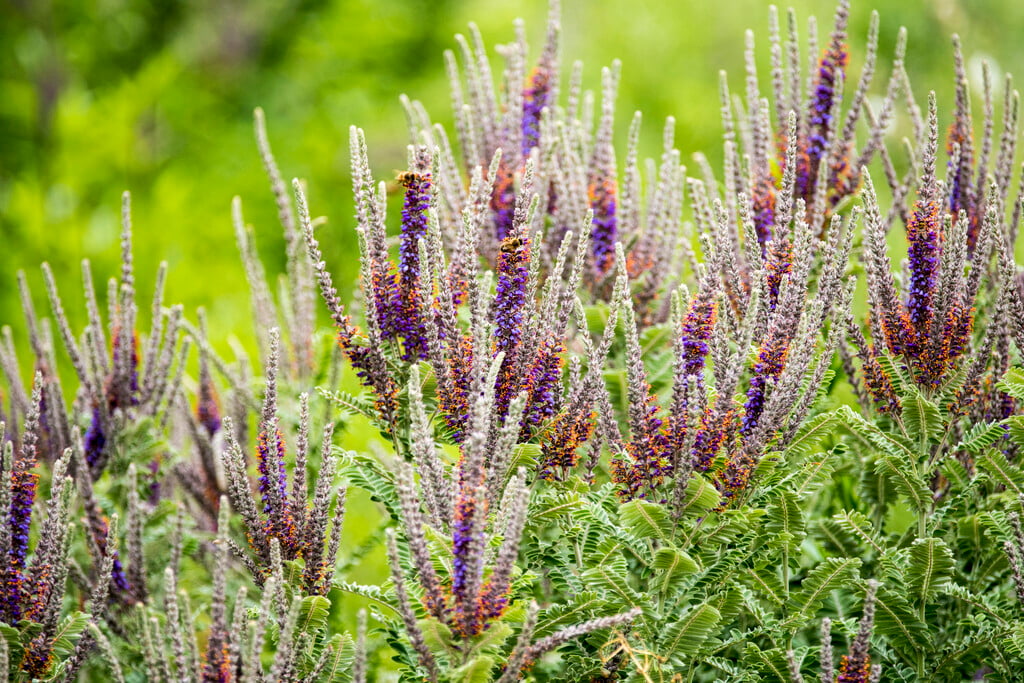Amorpha canescens
lead plant
A deciduous, spreading shrub to around 100cm in height, producing hairy, grey-white shoots and feathery, grey-green aromatic leaves, 6-15cm long, made up of 10-20 pairs of overlapping, oval leaflets. Tall spikes of small, dark violet-purple to purple-blue flowers with orange anthers appear from late summer through to early autumn
Size
Ultimate height
0.5–1 metresTime to ultimate height
5–10 yearsUltimate spread
0.5–1 metresGrowing conditions
Moisture
Well–drained, Moist but well–drainedpH
Acid, Alkaline, NeutralColour & scent
| Stem | Flower | Foliage | Fruit | |
| Spring | White Grey Silver | |||
|---|---|---|---|---|
| Summer | Blue Purple Orange | Grey Silver | ||
| Autumn | Grey Silver | |||
| Winter |
Position
- Full sun
- Partial shade
Aspect
East–facing or South–facing or West–facing
Exposure
ShelteredDrought resistance
Yes Hardiness
H7Botanical details
- Family
- Fabaceae
- Native to GB / Ireland
- No
- Foliage
- Deciduous
- Habit
- Suckering, Columnar upright, Bushy
- Genus
Amorpha are deciduous shrubs with pinnate leaves and racemes of tiny, single-petalled, deep purple or blue flowers in summer
- Name status
Correct
- Plant range
- North America
How to grow
Cultivation
Grow in light, sandy, well-drained soil in sun or partial shade
Propagation
Propagate by seed. Sow pre-soaked or scarified seed in autumn in containers in an open frame. Separate rooted suckers in autumn or winter
Suggested planting locations and garden types
- Gravel garden
- Mediterranean climate plants
- Prairie planting
- Flower borders and beds
Pruning
Pests
Generally pest-free
Diseases
May be susceptible to rust diseases and powdery mildews
Get involved
The Royal Horticultural Society is the UK’s leading gardening charity. We aim to enrich everyone’s life through plants, and make the UK a greener and more beautiful place.
